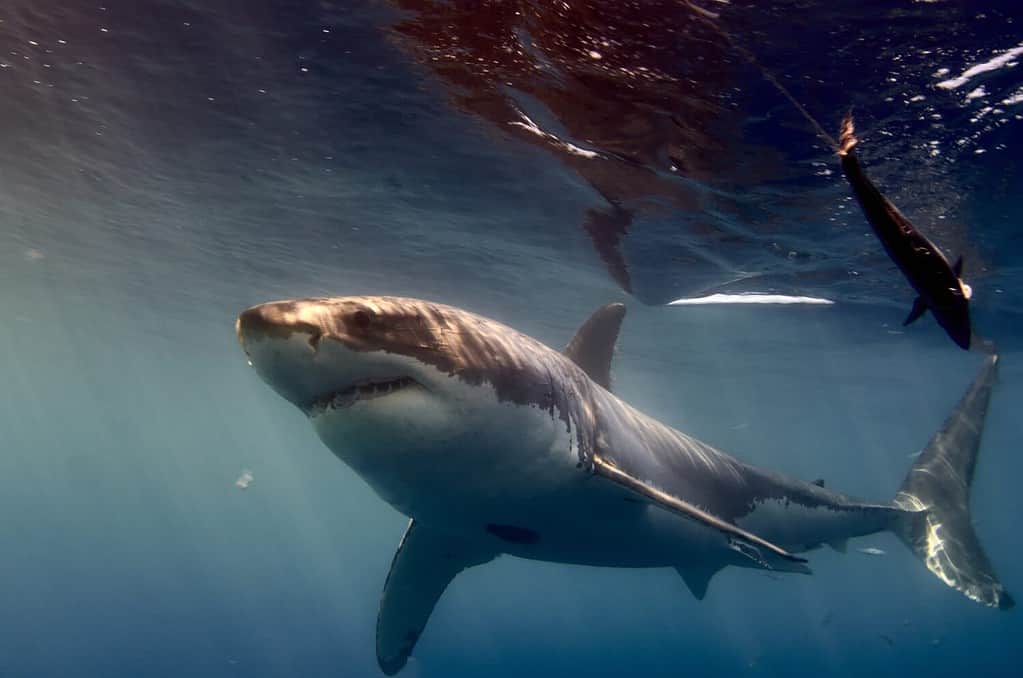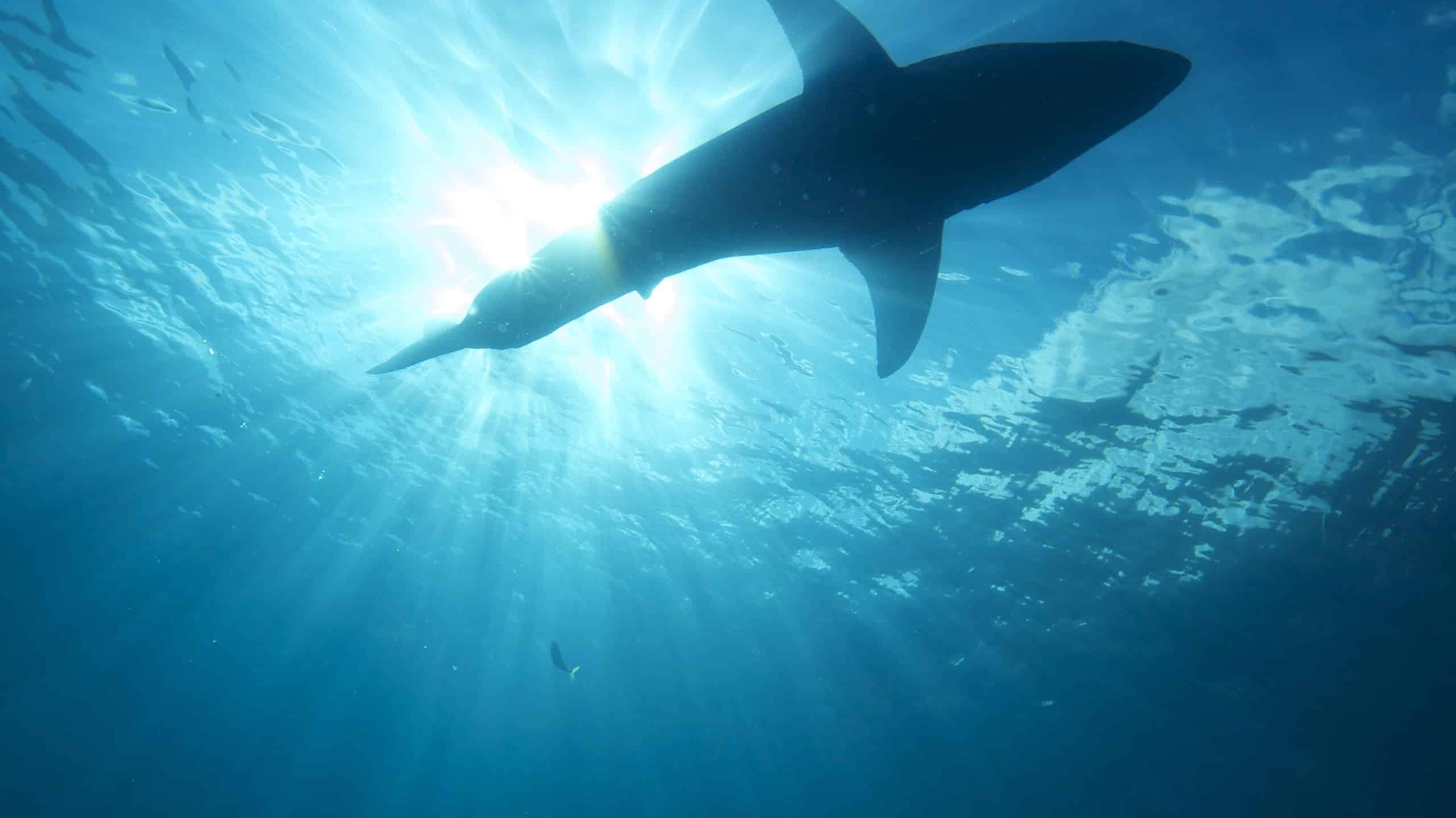When you step into the salty surf of the ocean, you may know that a shark is nearby. However, did you know they’re often closer than you think?
In a recent sighting in California, a great white shark was reported swimming mere feet away from the shore. As seen in the video below, the shark lurks just beneath the waves in the shallows. The only sign the shark is beneath the murky water is the fact its fins are exposed to the air.
It can be daunting to think of a shark swimming in the same waters you may play in during the summer months. However, shark attacks aren’t as common as many think. In 2022, there was a total of 57 unprovoked bites in the year. This is actually a decrease compared to the ten-year average. This decade-average sits around 74 unprovoked bites per year, according to the University of Florida.
Understanding this species is essential to coexisting with them. While it is important to have a healthy respect for not only sharks but the ocean itself, it is equally as important to know that sharks aren’t the man-eating monsters of the deep that popular media may make them out to be. Unprovoked bites are rare and often the cause of mistaken identity. This is because human swimmers may look similar to seals — a common prey of sharks.
Species Profile: Great White Shark
The great white shark (Carcharodon carcharias) is one of the ocean’s apex predators. Their massive mouths can hold as many as 300 serrated teeth, allowing them to hunt a variety of prey, from small fish to whales. They can easily grow to reach lengths of 20 feet long, with females of the species being larger than their male counterparts. As for weight, great white sharks often weigh around 2,450 pounds to 4,938 pounds.
Great white sharks are a species listed as “vulnerable.” Human interference, from hunting to the loss of resources, is one of the main causes of their declining population. It can take females up to seventeen years to reach maturity and be able to reproduce, with two to three years occurring between each litter. This rather slow reproduction rate makes it so that it is more difficult for the population to recover from major threats.

The great white shark is the largest predatory fish on earth.
©Wirestock Creators/Shutterstock.com
Thank you for reading! Have some feedback for us? Contact the AZ Animals editorial team.








